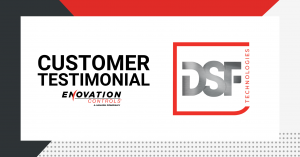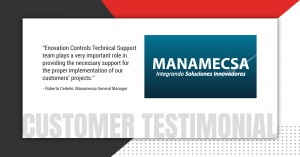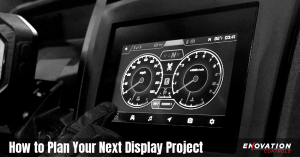At Enovation Controls, we strive to clear a path for our customers with application-ready solutions that conquer complexity. We want to make sure your equipment is up for the task, and that you get the most out of your HMI display to ensure you have everything you need to get the most efficient results from your equipment.
To ease the burden of tough Euro Stage V emission requirements on our customers, we have been hard at work on new solutions designed to simplify the transitions. One of these solutions is a new Stage V-compatible software package for our popular PowerView® 380 monochrome display. We spoke with EMEA Sales and Application Engineering Manager Osas Imade to learn a bit more about what the Stage V standard is, why it’s important and to see how this new software can save equipment owners time and effort.
What is Stage V?
Osas: Stage V is the current European exhaust emission regulation standard for non-road mobile machinery (NRMM) and is currently the most stringent machinery exhaust emissions standard worldwide. Compared with previous EU Stage IV (and the roughly aligned Tier 4 Final US EPA standards), Stage V in effect calls for: Reduced g/kWh emission levels for Carbon Monoxide (CO), Hydrocarbons (HC), Nitrous Oxides (NOx) and Particulate Matter/Mass (PM).
Under the Stage V legislation, Particulate Number (PN) requirements are now extended to more engines with the addition of low power <19kW/25hp and high power >560kW/750h engines which were previously not covered.
How does Stage V compare to the Tier 4 Final standard?
Osas: You will find huge jumps in the level of reduction of particulate matter (PM) going from non-tiered engines to tiered engines at levels 1 – 4. There is a smaller shift when you compare Tier 4 Final to Stage V engines. A lot of engine manufacturers anticipated the incoming Stage V legislation and have Tier 4 final engines which also meet the Stage V requirements. The main difference between Tier 4 final and Stage V is the extension of Stage V emission control to low power <19kW/25hp and high power >560kW/750hp engines not previously covered.
What is so difficult about Stage V, and how does this new software solve it?
Osas: In general, nothing is particularly difficult about implementing a Stage V solution. What the Stage V standard application software does is clear a path for our customers by ensuring the Stage V strategy for various engine OEMs are properly met. This means that when a particular engine is selected, the settings, messages and icons available to the operator are automatically set per the engine manufacturers’ guide.
How does using this new Stage V software differ from the software that comes with a PV380 today?
Osas: The new Stage V application on the PV380 goes beyond just configuring settings for each engine. It allows users to easily configure the I/O and provides a quick view of the status of the I/O. with the intuitive interface, users can set service reminders, view fault codes, configure torque/speed control (TSC1) messages right from the interface. Finally, the updated menu structure, including an engine selection menu, allows users to configure the PV380 to meet their engine and application demands.
How can someone start using this Stage V software?
Osas: If you are in need of a Stage V engine solution, you can download the PV380 Stage V software application with multilanguage support right on to your existing PV380 using our ECOM CAN device and the PowerVision Configuration Studio® toolkit. Once loaded, set up is made easy through the menu. Bookmark the PV380 Stage V page at our support site to remain up to date as new features and support for new engines are made to the software.
For more information about how Enovation Controls can help you solve Stage V, contact our EMEA Sales team or find your local authorized distributor.



